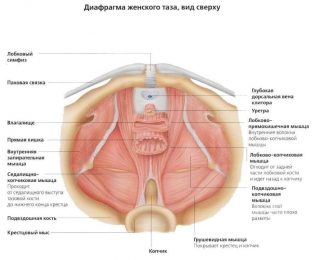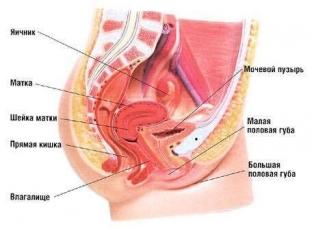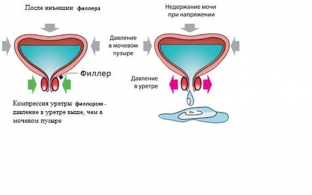In the modern world, where most women lead a socially active lifestyle, such a delicate problem as urinary incontinence is especially acute. According to statistics, after 40 years, every fifth woman faces it, and after 60 – almost half of the fair sex.
Pathology significantly worsens the quality of a woman's life, as well as her psychological state. But modern medicine knows effective methods for correcting urinary incontinence. Especially for the readers of estet-portal.com, a dermatologist, surgeon and injection technology specialist Radkevich Viktoria Pavlovna spoke about how hyaluronic acid-based fillers are used to treat female urinary incontinence.
Modern minimally invasive treatment of female urinary incontinence
Female urinary incontinent – it is a problem that causes significant psychological discomfort to the patient. Uncontrolled excretion of urine and the presence of an unpleasant odor cause patients to close in on themselves and prefer to avoid communication with people and new acquaintances, and also have practically no personal life. In addition, very often women do not seek help from specialists, as they consider the problem to be very delicate and personal.
Dr. Victoria Radkevich: “The main goal of aesthetic medicine specialists – prevent incontinence from depriving the patient of a comfortable life and provoking mental disorders.”
Therefore, practitioners should have the necessary information about this pathology, as well as effective modern methods of its correction.
Incontinence:
- classification of female urinary incontinence: main types of disease;
- stress urinary incontinence – the most common type of incontinence;
- Treatment of urinary incontinence with hyaluronic acid fillers.
Classification of female urinary incontinence: main types of disease
In 2003, the International Society for Urinary Incontinence proposed the most comprehensive classification of female urinary incontinence:
- compulsory urinary incontinence – excessive stimulation of the muscles of the bladder wall provokes a sudden strong urge to urinate, while the patient cannot hold urine;
- stress urinary incontinence – uncontrolled urination occurs when intra-abdominal pressure increases, for example, during coughing, laughter, physical exertion, and so on, while the patient does not feel the urge to urinate. The main reason – pelvic floor insufficiency;
- unconscious urinary incontinence – It is caused by a violation of the conduction of nerve impulses to the bladder from the central nervous structures. Incontinence occurs reflexively, as the patient does not experience the urge to urinate even with a full bladder;
- continuous leakage of urine – develops in connection with the failure of the sphincter apparatus of the urethra, associated with impaired nerve conduction;
- enuresis – this is bedwetting, which may be present from birth or occur at an older age, due to infectious and inflammatory pathologies, as well as psychosomatic diseases;
- urinary leakage after urination is complete – The problem is related to detrusor failure. Complete urination becomes impossible due to insufficient strength of muscle contractions, and the urine remaining in the bladder gradually leaks under the influence of gravitational forces, which the weakened sphincter apparatus is not able to effectively resist.

Stress urinary incontinence – the most common type of incontinence
The most common type of female urinary incontinence is stress urinary incontinence. The main risk factors for pathology are pregnancy and childbirth, obstetric injuries of the perineum, impaired innervation and circulation of the pelvic floor, changes in the ligamentous apparatus of the uterus, connective tissue dysplasia, as well as infantilism, constitutional features, and even hard physical labor. In order to properly treat the disease, it is necessary to correctly diagnose it: confirm the presence of incontinence, assess the condition of the pelvic floor, identify the relationship between incontinence and dystopia of the pelvic organs.

To retain urine, the correct positioning of the bladder and urethra is necessary, which is provided by the ligamentous apparatus of these organs, as well as the muscles and fascia of the pelvic floor. Depending on when stress urinary incontinence occurs, its 3 degrees are determined:
- I degree – slight loss of urine only with strong exertion;
- II degree – loss of urine during moderate physical exertion;
- III degree – incontinence that occurs even with slight exertion or at rest.
Urinary incontinence treatment with hyaluronic acid fillers
The treatment of female urinary incontinence is to strengthen and narrow the urethra, which helps to eliminate symptoms that impair the patient's quality of life. Modern medicine offers a highly effective, minimally invasive method for correcting pathology – transurethral injection of fillers based on hyaluronic acid.

The technique of the procedure is as follows: under local anesthesia, under aseptic conditions, a filler is inserted into the submucosal space in the area of the external urethral sphincter using a 27 G needle. The injection technique can be bolus or linear retrograde; on average, one patient needs from 1.0 to 2.0 ml of the drug. Replenishment of soft tissue deficiency in the area of the external sphincter compensates for the insufficiency of the internal sphincter, and the increasing intraurethral pressure reduces the risk of urinary incontinence.
Injection of hyaluronic acid-based fillers into the external sphincter area is a safe and highly effective treatment for stress incontinence in women.
The low invasiveness of the procedure, the simplicity and safety of its implementation, as well as saving sufficient volume of the implant for up to a year and a half make this method of urinary incontinence correction in demand and popular. On estet-portal.com you can leave your feedback, questions and wishes in the comments to the article. Thank you for staying with us!







Add a comment